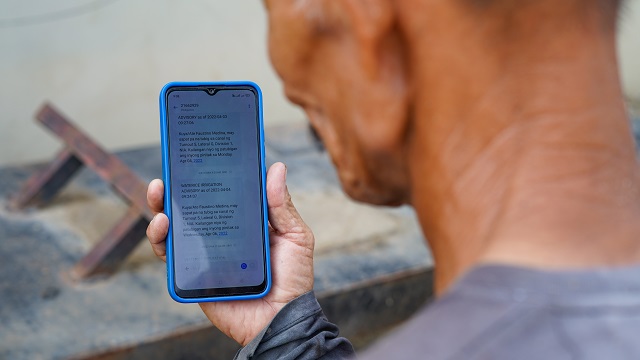
Drought has always been an intense foe of Faustino Medina, a rice farmer from Barangay Bantug, Science City of Muñoz, Nueva Ecija. This enemy always left him with low yield – a deep, painful wound for his pockets and their household table.
His story represents most Philippine farming communities whose main staple and source of livelihood is rice. During an El Niño phenomenon, rice production is most challenging as it is water-dependent. This poses a risk not only to food security but also to every farming family’s finances.
They are compelled to seek sustainable solutions to optimize whatever water resource they have to avoid having more ‘farming scars’.
In 2016, the WateRice project, a collaborative effort among PhilRice, IRRI, the National Irrigation Administration, and the Bureau of Soils and Water Management introduced AutoMonPH to Medina and the rest of the Bantug Bakal Irrigators Association (BBIA).
It soon became their proactive approach not only to efficient water management in times of drought, but also to any other season of cropping. AutoMonPH is an electronic device for measuring the rice paddy field water level. It is based on the alternate wetting-and-drying technology. It uses a sensor to monitor and log the water level. Data is transmitted via a wireless network to a server or the water user.
AutoMonPH has an irrigation advisory service so that farmers receive via SMS their farm’s water level information. It comes with advice on when it is time to irrigate. It also automatically sends data to a central database that can disseminate via SMS an advisory to the farmers’ association and irrigation system manager on which areas need water.
Its first prototype was installed in Medina’s 2-ha field. Every cropping season, he would put the device in the field three days after transplanting. He used it for several seasons.
“The AutoMonPH is helpful. I never imagined that there would be such a device that could provide accurate water level readings. It is time-saving as well,” this 65-year-old chairperson of BBIA was in awe.
Later on, he testified about the technology to his farmer-members. PhilRice then installed two improved AutoMonPH sensors in each member’s farm. It covered 252.85ha.
“Before the project, we used to go back and forth to the field to check if our rice crop needed water. But with AutoMonPH, we can now monitor the water level in our farm anywhere and in real-time. We do not need to go out under the Lenten sun, especially our senior members,” Medina cautioned.
Serving as cooperators of the project, BBIA also provided insights on the technology, which served as valuable input for the members of the technology development team.
“Its sensor battery life only lasts for four days. When the battery is low, it could result in inaccurate data. We dealt with it by ensuring that we replace the battery before it runs out. The replacement is always ready,” Medina said.
Recently, the WateRice Project team has improved the AutoMonPH sensor, with battery power now lasting more than 60 days.
Medina believes that while using AutoMonPH works individually, it is also a good avenue for them and for any farmers’ group to become efficient managers of irrigation water. For him, water conservation not only helps farmers produce more with less water, it can also help them cut labor and costs together – an act stronger than their intense foe, they hope.




